When it comes to the weirdest birds, there's an abundance to choose from. For example, the brightly colored king vulture, the strange giant stork - and not to forget the prehistoric-looking shoebill with its disturbing eyes. Here are 12 of our favorite and weirdest birds.
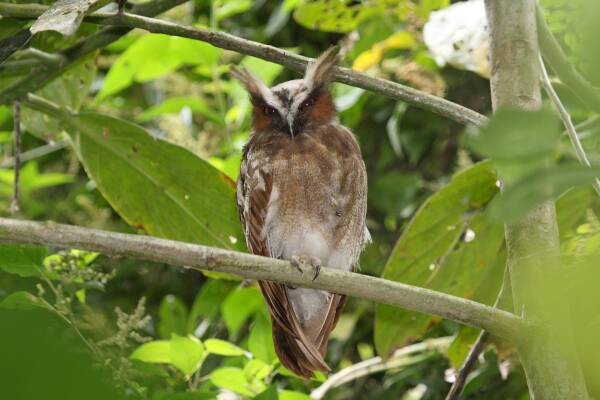
The Crested Owl is a medium-sized owl with a total length of 38 to 43 centimeters and a weight of 425 to 620 grams. It is easily recognized because of its long white ear hairs and dark appearance. It is found in Central and northern South America and inhabits lowland rainforests, preferring old trees near water. Like most owls, this species is strictly nocturnal. During the day, they usually roost with their mates in dense bush, along forested streams or rivers, preferring to roost 3 to 10 meters above the ground. When a crested owl is disturbed while roosting, it becomes slender and raises its ear hairs.
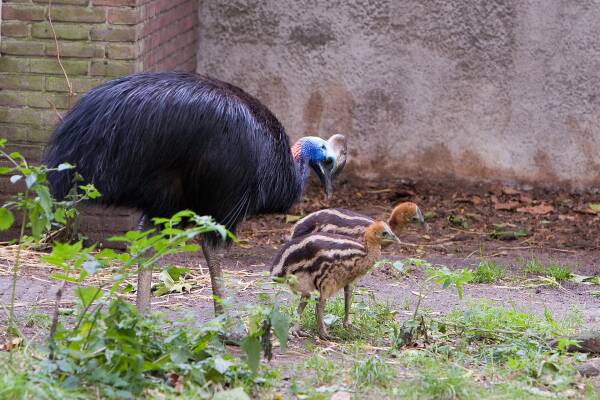
The southern cassowary, also known as the double-wattled cassowary, Australian cassowary, or double-wattled cassowary, is a large, flightless, black bird found in Indonesia, Papua New Guinea, and northeastern Australia. It is one of three extant cassowaries, along with the pygmy cassowary and the northern cassowary. It is a ratite and therefore related to emus, ostriches, rheas and kiwis.
The Southern Cassowary has stiff, bristly black feathers, a blue face, and a long neck with a red mantle and two 17.8-cm-long red wattles hanging around its throat. There is a horn-like brown helmet on top of the head, 13 to 16.9 cm high. Note lengths range from 9.8 to 19 cm. Feathers are monotypic in sex, but females are dominant, larger, have longer mantles, larger beaks, and more colorful exposed parts. Young birds have brown vertical stripes on their feathers.
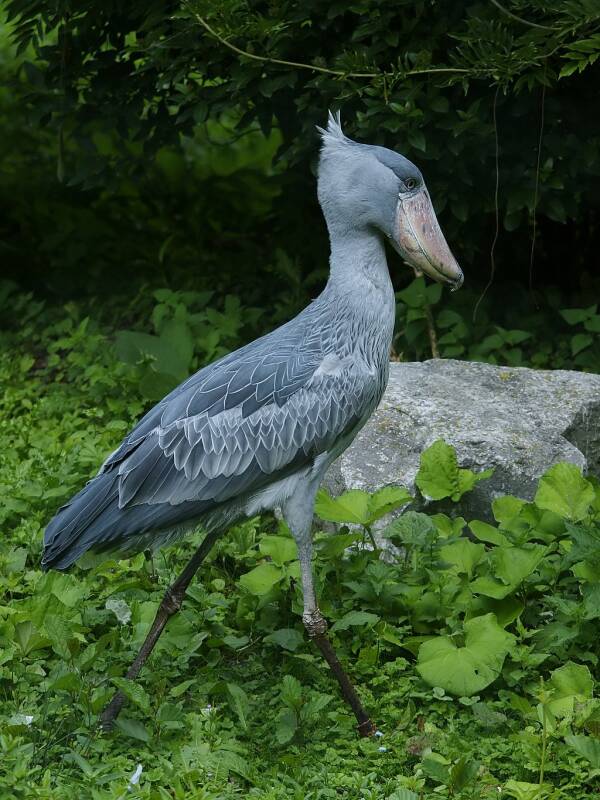
The shoebill stork, also known as the shoebill stork, shoebill stork, and shoebill stork, is a large long-legged wading bird. It is named for its huge shoe-shaped beak. Its overall shape is somewhat stork-like, and it was previously classified as a stork with the order Storkidae based on this morphology. However, genetic evidence suggests that it belongs to the order Pelicanidae, along with pelicans and herons. Adult birds are mainly gray, while young birds are mostly brown. It lives in the Everglades of tropical East Africa from South Sudan to Zambia. The shoebill is a tall bird, with a typical height ranging from 110 to 140 cm and its weight from 4 to 7 kg. The species' signature feature is its large bulbous beak, which is straw-colored with unstable gray markings. The exposed beak measures 18.8 to 24 centimeters, making it the third longest beak of living birds after the pelican and the great stork.
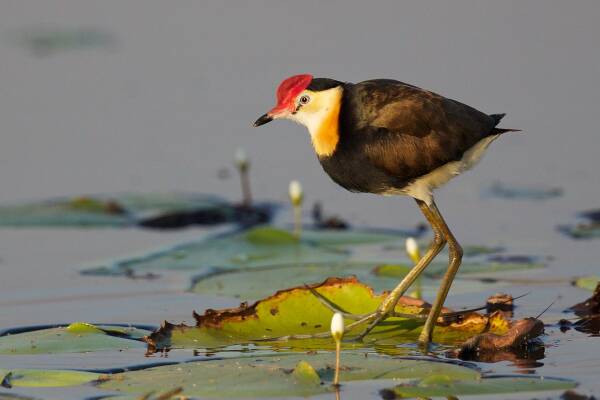
Water pheasants (sometimes called jesus birds or lily-hooves) are a group of tropical wading birds in the family pheasantidae. They are found in tropical areas around the world. They are known for their elongated toes and nails, which allow them to spread their weight while foraging on floating or semi-emergent aquatic plants. They are also one of the rare birds with larger females, and several species maintain harems of males during the breeding season, with the males only responsible for incubating the eggs and caring for the chicks. Water pheasants are characterized by their elongated toes and claws, which enable them to walk on floating vegetation in shallow lakes, their preferred habitat. They have sharp beaks and rounded wings, some have carpal spines, and many species also have wattles and wattles on their foreheads.
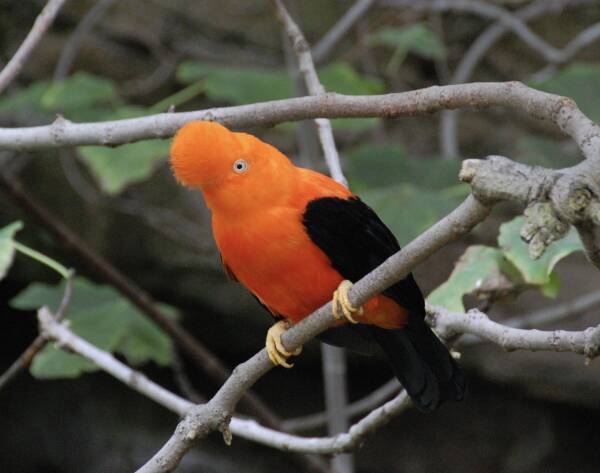
Rock cocks, belonging to the genus Rupicola, are large gallinaceous birds native to South America. The genus consists of only two known extant species: the Andean cockatoo and the smaller Guyanese cockatoo. The Andean cockatoo is the national bird of Peru. Males are gorgeous birds, not only because of their bright orange or red coloring, but also because of their very prominent fan-shaped crests. Like some other cotingids, they have complex courtship behaviors and display impressive lek displays. These birds are wary animals and difficult to see in the rainforest canopy, except during mating season. They feed primarily on fruits and berries and may be important dispersal vectors of rainforest seeds.
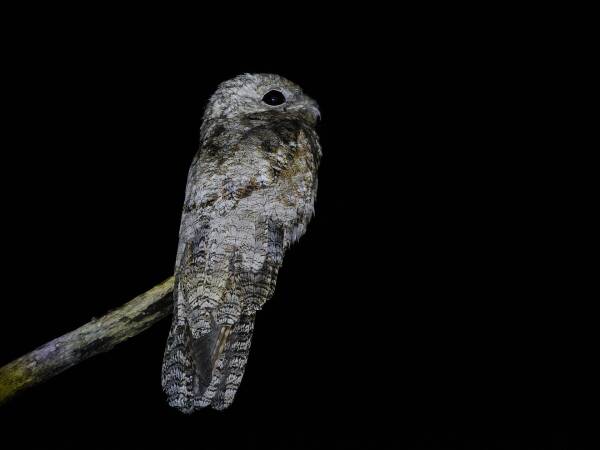
The Great Wood Owl is a shy and solitary animal, usually standing upright on a tree stump during the day and being overlooked due to its resemblance to part of a tree stump. This is a kind of camouflage, not only in color, but also in environment. Nocturnal, it preys on large insects and small vertebrates, capturing them by surprise from high altitudes. Its most famous feature is probably its distinctive moaning sound, which the giant kangaroo makes throughout the night, using its nocturnal sounds to create an unsettling atmosphere in the Neotropics. The Great Wood Owl has a large head relative to its body. The eyes are also large, with brown to yellow irises, and the beak is short and broad. Their wings are oval and their tails are slender. Feather colors include white, gray, black and burgundy. The color of the tail matches that of the rest of the body, except that a white stripe can be seen running transversely across the tail.
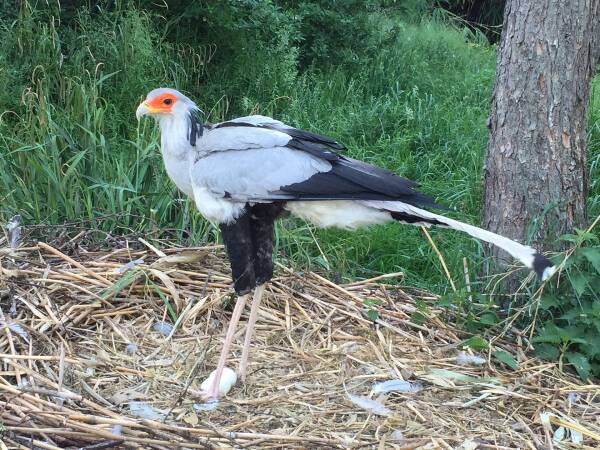
The snake vulture is a large, primarily terrestrial bird of prey. It is endemic to Africa and is commonly found in open grasslands and savannas south of the Sahara. The snake vulture is instantly recognizable as a very large bird, with an eagle-like head, body and crane-like legs, reaching a height of up to 1.3 meters. Both sexes are similar in appearance. Adults have a featherless reddish-orange face with mainly gray feathers, a flat dark crest, and black flight feathers and thighs. The snake vulture specializes in trampling its prey until it is killed or immobilized. This hunting method usually works with lizards or snakes. It has unusually long legs (almost twice as long as other ground birds of the same weight), which is thought to be an adaptation of the bird's unique stomping and striking hunting method.
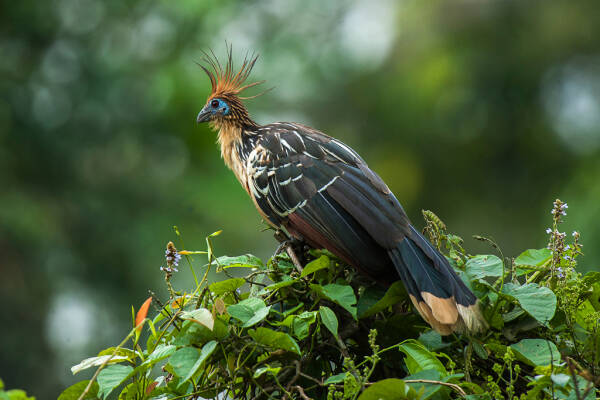
The musk pheasant is a tropical bird that lives in the swamps, riparian forests and mangroves of the Amazon and Orinoco river basins in South America. The musk pheasant is the size of a pheasant, with a total length of 65 cm, a long neck and a small head. It has a featherless blue face with chestnut eyes, and a spiked reddish-brown crest on top of its head. The long smoky brown tail ends in a coppery green color with a broad white or buff band at the end. The musk pheasant is a noisy bird that makes a variety of hoarse calls, including moans, croaks, hisses and grunts. These calls are often associated with body movements, such as wing spread. The Musk Pheasant is a folivore - it eats the leaves (and to a lesser extent fruits and flowers) of plants growing in the swamp and river habitats in which it lives. It crawls awkwardly along tree branches and is quite docile, often allowing close approaches.
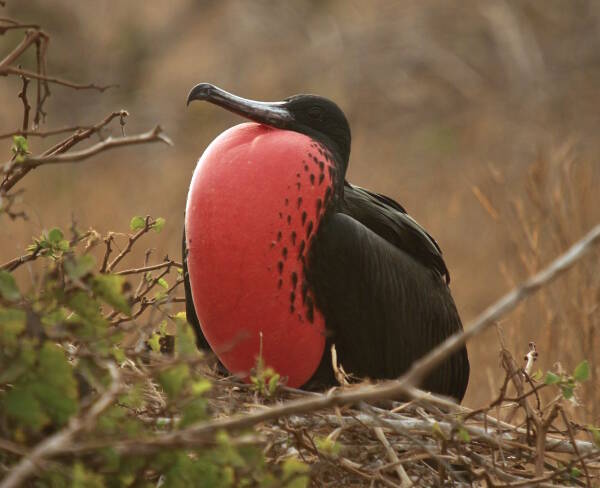
Frigatebirds are found in all tropical and subtropical oceans. A large, slender seabird with mostly black plumage, the five species are similar in appearance to each other. The largest species is the magnificent frigatebird, which can reach a length of 114 cm, with three of the remaining four species almost as large. The lesser frigatebird is much smaller, measuring about 71 centimeters in length. Their feathers are mainly black, their tails are long and deep, and they have long hooked beaks. Females have a white underbelly, and males have a unique red throat pouch that they inflate during the breeding season to attract females. Their wings are long and pointed, with a span of up to 2.3 meters, and have the largest ratio of wing area to body mass of any bird.
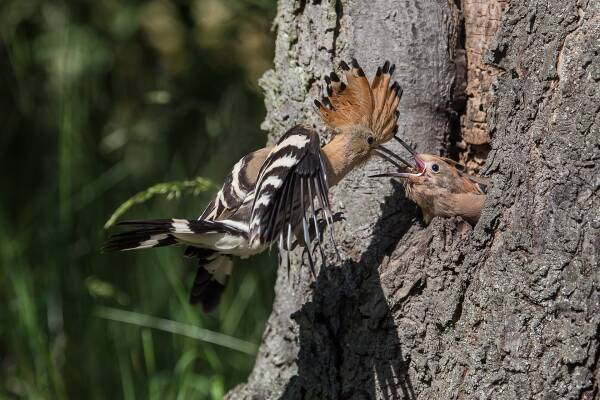
The hoopoe is a colorful bird found in Africa, Asia and Europe, known for its distinctive "crown" of feathers. Hoopoe birds have long sunbathed in what is considered a defensive posture, holding their wings and tail low to the ground and raising their heads to sunbathe. They often fold their wings and preen their feathers mid-flight. Also enjoys taking dust baths and sand baths. Adult birds may begin molting after the breeding season and continue after winter migration. The hoopoe is a unique bird that has had a cultural impact across much of its range. They were considered sacred in ancient Egypt and were "depicted on the walls of tombs and temples." In 2008 the hoopoe was selected as the national bird of Israel.
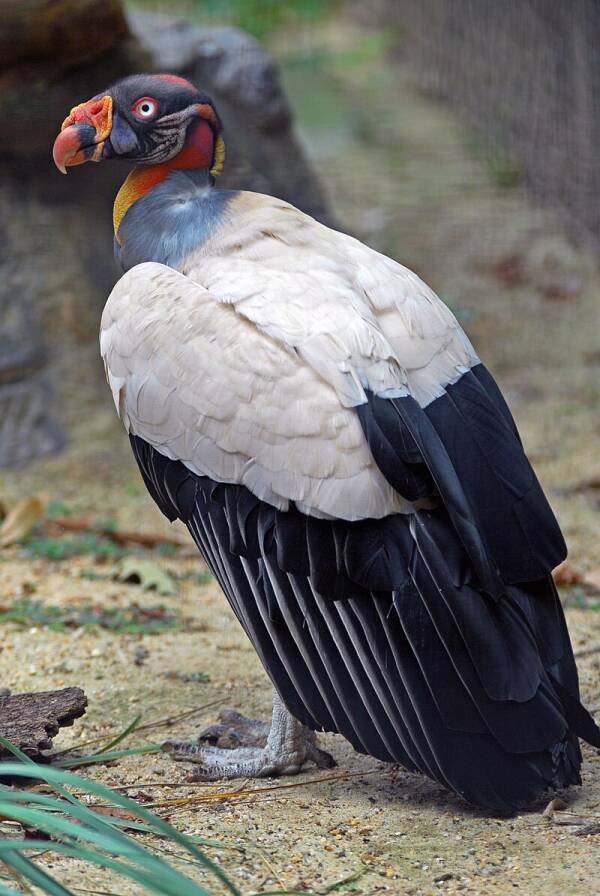
The king vulture is a large bird that lives in Central and South America. It is large and mainly white, with gray to black neck, flight and tail feathers. The head and neck are bald and the skin colors are different, including yellow, orange, blue, purple, red, etc. The King Vulture has a very distinct orange fleshy caruncle on its beak. This vulture is a scavenger, eating anything from the carcasses of cattle to the carcasses of monkeys and other arboreal mammals, to stranded fish and dead lizards. The king vulture can find carrion in the forest without the help of other vultures, suggesting that it uses its sense of smell to locate food. King vultures are known to live up to 30 years in captivity.
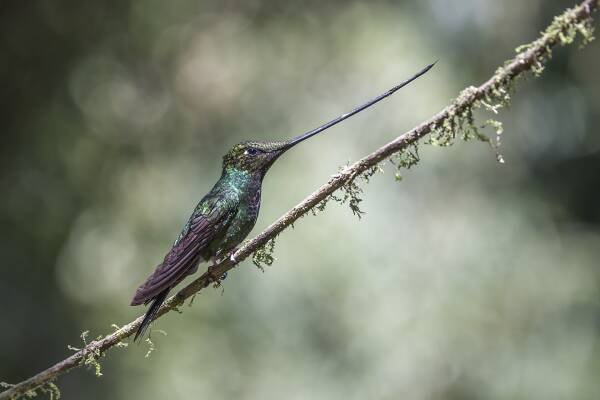
The sword-billed hummingbird is characterized by its unusually long beak, being the only bird whose beak is longer than the rest of its body (not including its tail). It uses its beak to drink nectar from long-corolled flowers and co-evolved with passionflower species. While most hummingbirds use their beaks for grooming, the sword-billed hummingbird uses its feet to scratch and groom because its beak is so long. The sword-billed hummingbird is a predator that feeds on nectar, especially that of passionflower and other passionflowers. It also preys on insects. It breeds from February to March and builds cup-shaped nests out of moss.
animal tags: birds
We created this article in conjunction with AI technology, then made sure it was fact-checked and edited by a Animals Top editor.